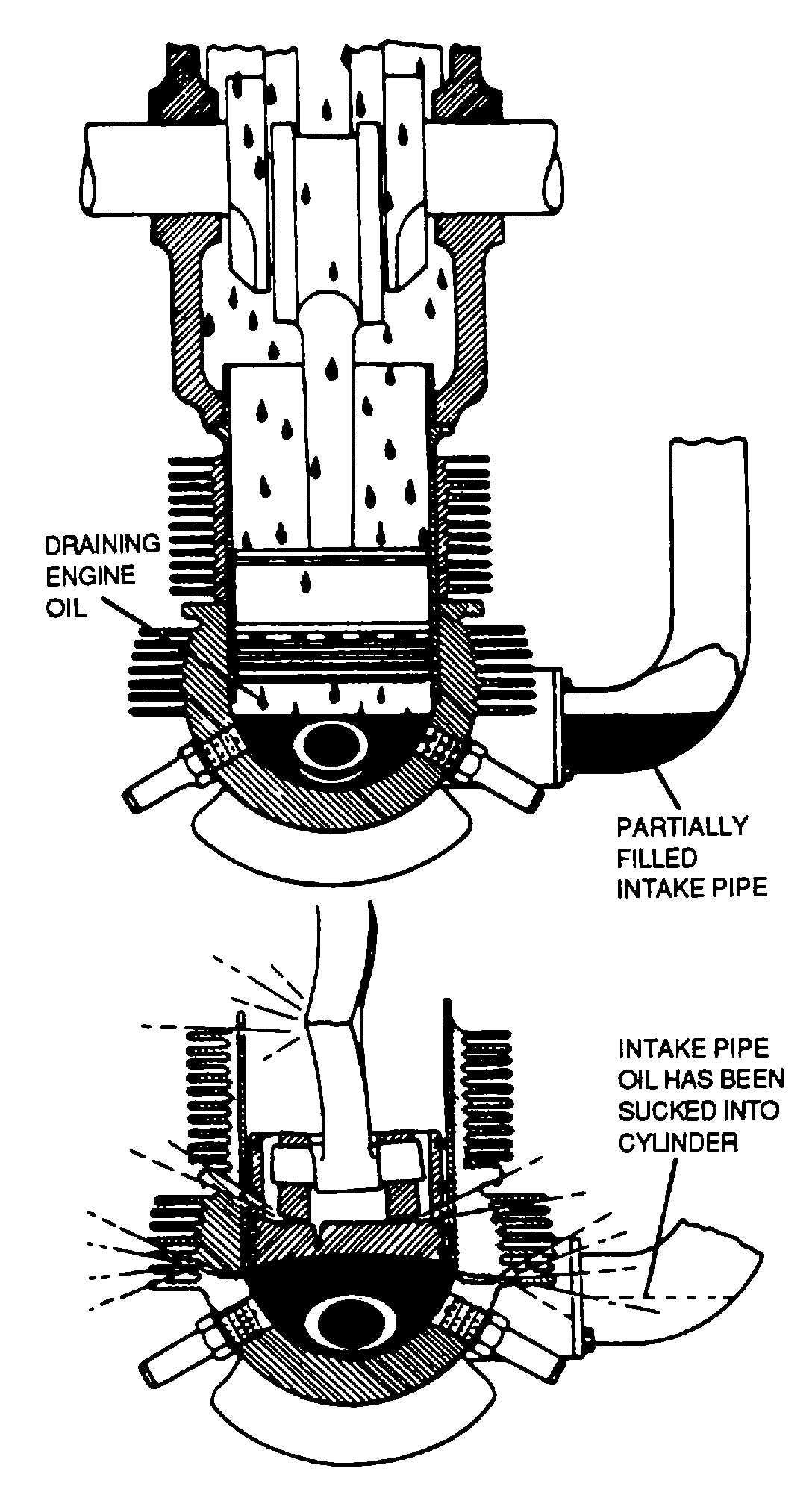TM 1-1500-204-23-1
Liquid locks are partial or complete. Hesitation
in propeller rotation usually denotes a partial
lock. If propeller stops, it usually denotes a
complete liquid lock. Forcing engine through a
complete liquid lock will cause Immediate
engine failure.
Liquid locks are also caused by oil in intake
pipes
as
a
result
of
preservation,
fuel
discharged
into
the
intake
system
while
crankshaft is not rotating, or oil flowing from
push rod housing into rocker box, then seeping
through intake or exhaust valve guides into
intake or exhaust ports.
Due to the mechanical advantage of a long
propeller blade and the fact that two or more
men per blade are used for propeller pull
through, possibility of bending a rod by manual
pull-through is more likely than by starter pull
through. This is particularly true when a partial
liquid lock is present, since the piston with a
partial liquid lock will be very near the top of the
stroke when force. Is required to rotate the
crankshaft against the liquid lock Liquid lock
may bend the connecting rod slightly, but not
enough to move the lower piston ring out of the
cylinder skirt, on the downward stroke, in which
case internal failure may occur within the next
50 hours.
If liquid lock is suspected, remove a spark plug
from cylinder involved and allow liquid to drain
out. Turn propeller several revolutions to make
certain all liquid has drained from cylinder and
induction lines, then install clean spark plug.
(c)
Valve blowby. Valve blowby is
Indicated by a hissing or whistling sound when engine is
pulled through by propeller, turned with starter, or while
idling at low speed. Correct valve blowby by first
checking valve clearance and adjust as necessary. If
valve clearance is excessive, proceed using the following
procedures.
NOTE
If valve is stuck in the valve guide,
correct
clearance
cannot
be
determined.
1
Stake valve by placing a fiber drift
on rocker arm and valve stem, and then drift with a
hammer.
2
Determine
whether
blowby
has
been eliminated by turning engine by hand or turning it
through with starter.
3
When
blowby
is
still
present,
perform a compression test.
Figure 7-13. Liquid Lock
7-10

